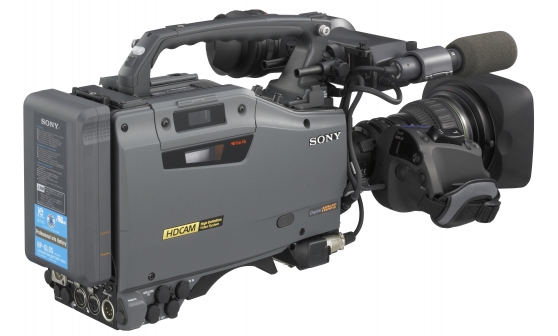
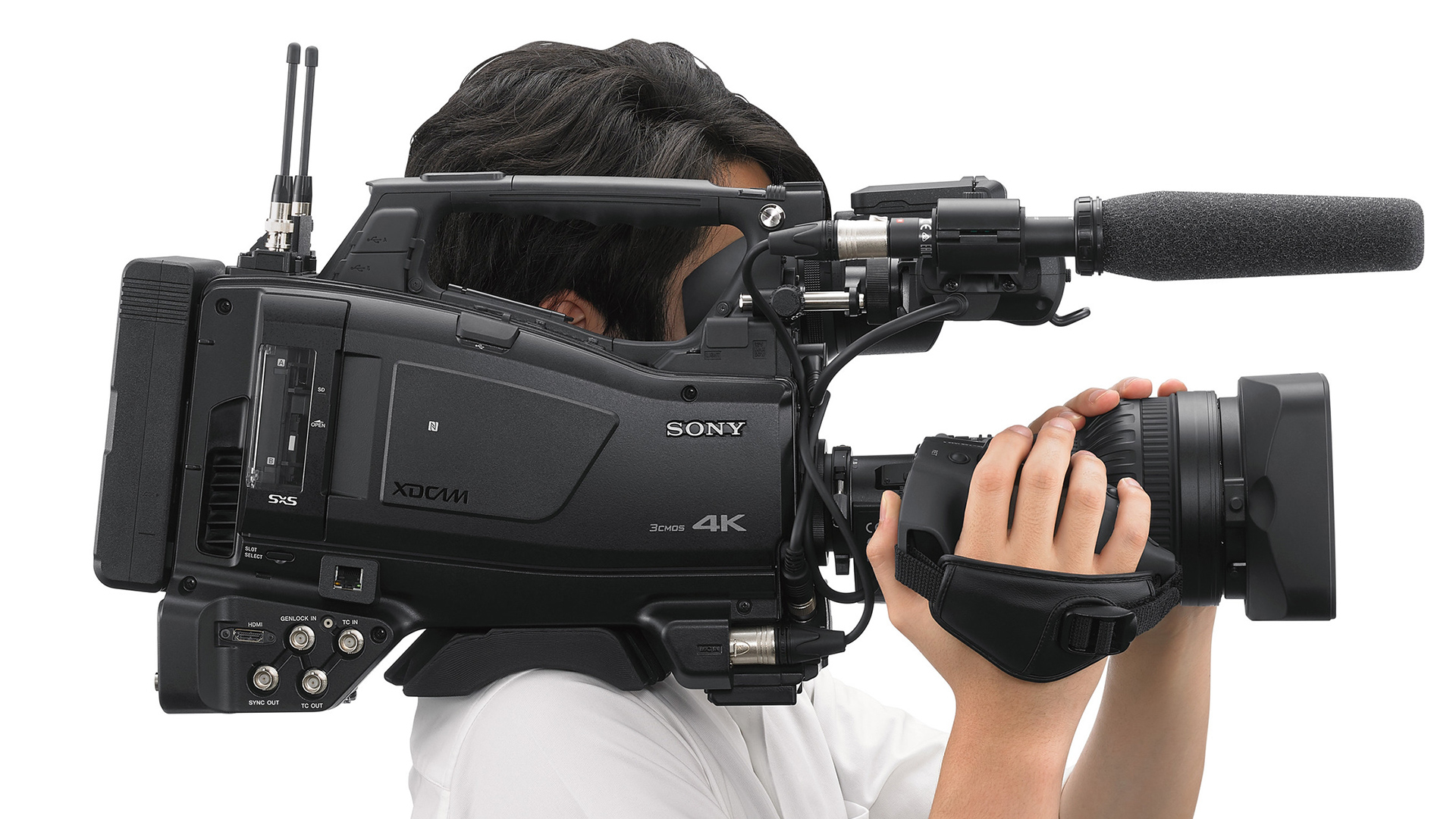 Has the traditional shoulder mount camera entered its final decade?
Has the traditional shoulder mount camera entered its final decade?
The 2/3" shoulder camera, once ubiquitous by its presence, is now suffering an identity crisis. What is it useful for now, and does it have a safe future?
I've written quite recently about how I have embraced the Panasonic S1 for video making, and how many of the preconceptions of shooting using a mirrorless camera may now be falsely held. It did, shall we say, stir conversation. But that's not to say that I am dismissive of other camera types. Far from it. It all comes down to the work that you do, and I used to use ENG style cameras on a daily basis. With that in mind I'm going to hand a bit of love back to the fondly viewed shoulder mount camera, but also to note a word of caution that the final curtain may well be starting to draw on it, even in its traditional safe space in broadcast.
In the last decade or so the traditional shoulder mount camera has fallen out of favour amongst the vast majority of video camera users, with large chip hydrids and 'cinema' cameras such as the Sony FS7 taking centre stage instead. It's understandable why this has happened in many ways. 2/3" shoulder mount cameras are expensive, and so are the lenses that go with them if you want a decent one. They also come with the baggage of being associated with news gathering. It's simple public perception 101. Why buy a camera that is perceived to be much more expensive, have subjectively lower picture quality, and has more of an association with Ron Burgundy than Roger Deakins?
Are the justifications for bypassing the shoulder mount camera justified? In many ways, no, but there also some compelling reasons why it has fallen by the wayside in a large percentage of peoples minds.
Let's take the idea that a Sony FS7, or any of the other larger cinema cameras out there can be rigged up for shoulder work. Yes, they can, but they need rigging and balancing. No cinema zoom will ever beat the versatility of a workhorse B4 lens, and that's because to have a fast lens that is designed for a large chip camera that also has a huge focal range it has to be big and heavy. Especially if it also has a servo control system on it. Okay, I know B4 lenses can be adapted to large chip cameras, but in general you will still end up with a more unwieldy rig than that of a dedicated camera. So the theory goes.
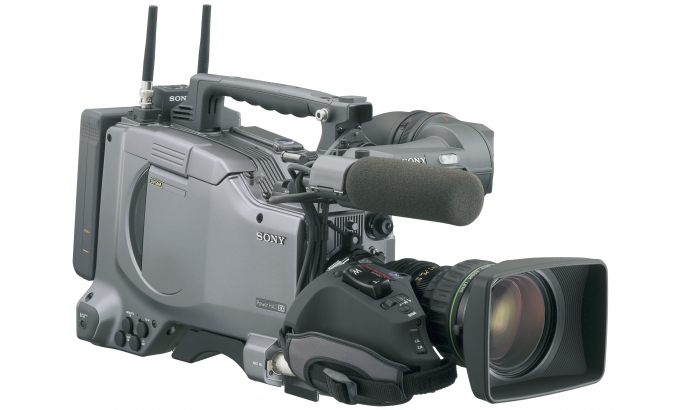
The Sony PDW-510P was the best camcorder I have ever owned. But looking back now it wasn't as versatile as I thought at the time.
Watch your back
Weight has always been an issue with shoulder mount cameras, usually when they are rigged up to the hilt with lights, transmitters, radio mic receivers etc. But for a lot of shoots, you might need a mic receiver and that's it. The beauty of a dedicated shoulder mount camera is that it lives in your bag ready to go. Lift it out, clip on the battery, and away you go. ND filters are built in, and so is a VCT-14 style wedge, along with a shoulder pad. No rigging necessary.
Modern shoulder mount cameras are a lot lighter than they were before the world went tapeless. Yes that is a term. We now think nothing of it, but the first generation of 'non linear' cameras were called "tapeless". The tape or disc mech is no longer required now, thank God. The latest generation of 2/3" camcorder from Sony, the PXW-Z750, weighs 3.8kg for the body, while the new FX9 is 2kg for the body only. On the face of it that looks like a big difference. After all the Z750 is almost twice the weight of the FX9. Add on a battery and B4 lens, and that takes the weight up to 7-8kg. Add on more accessories and that only goes up.
However, that lower base weight of the FX9 or FS7 is deceiving, simply because by the time you have rigged it up to take a B4 lens, or even one of the latest generation of 'cinema zooms', plus a proper shoulder rig and V-lock battery mount to help balance it all out, there's not a whole lot of difference in final weight. But there's more.
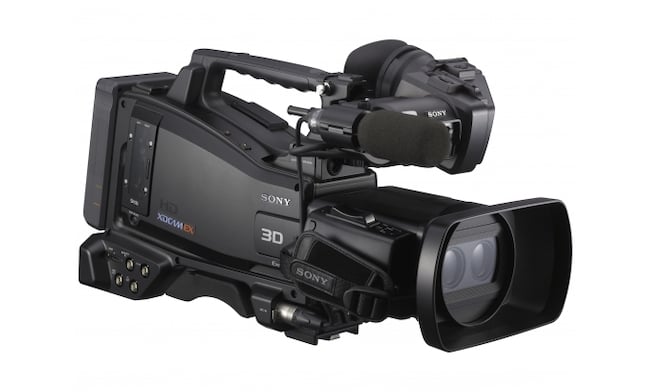
Anyone remember this? The Sony PMW-TD300. A brief foray into 3D for the shoulder mount camcorder
Ergonomics
With a dedicated shoulder mount camera all the buttons and controls are standardised in position. If you can use one camera, all of the important switches and controls are generally in the same place on another, even if it is from a different manufacturer. You won't for example find the XLR audio inputs on a dedicated shoulder mount camera randomly placed by the viewfinder or hidden under a handle. You also get other convenient features like external audio meter displays. The shoulder mount camera has had its design refined over decades, and has been shaped by the need for faff free video acquisition. It hasn't changed much because it didn't need to. The design worked.
What happened then? One reason for its decline is not that the shoulder style design itself has become obsolete, but because the way a lot of people want to use their cameras has changed. It's easy to forget that just over ten years ago if you wanted to make video for a living you could have a small camcorder, or you could have an expensive shoulder mount camera. None of those options allowed for a 'cinematic' image. And that's what a lot of people wanted. Not because they had ideas above their station, but because they wanted the tools to make cinematic quality imagery in areas of video production that were normally associated with 'the video look'.
And this ultimately is the Achilles heel of traditional camcorders. Most of them come setup out of the box with a very harsh video/news look, even now. But that's not to say that things haven't changed. They have, hugely. The new generation of shoulder camcorders can record log footage and HLG. Some of them can record ultra slow motion at 120fps. Dial down the detail settings to a minimum and there is absolutely no reason why you couldn't make a 'cinematic' looking image with one.
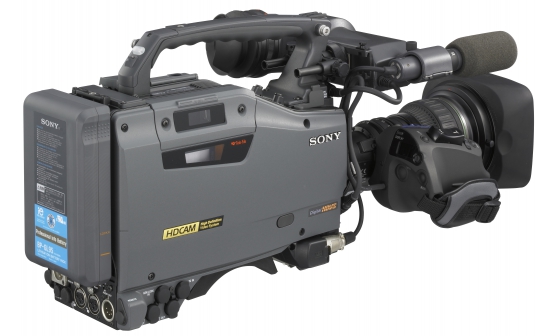
The Sony HDW-790. Does anyone truly miss tape?
Why get one?
With that in mind, why wouldn't you buy one? I mentioned a few reasons above, and user perception of them is a huge, unavoidable part of it. But there's another, and it's highly ironic. Despite the fact that shoulder cameras are designed as being the SUVs of the video camera world, they have become highly niche. It is easier to buy a 'cinema' or large chip camcorder like the FS7 or FX9 and turn it into a news gathering/documentary machine when needed than it is to get the full gamut of 'cinematic' advantages on a 2/3" shoulder mount camcorder.
An FS7 can be used extremely stripped down with a lightweight stills zoom and small batteries if needed. In this type of configuration it is very light and manoeuvrable. But you can't strip down a shoulder mount camera very much. What you have is what you have and it will always be a certain size and weight in a usable configuration, as well as a minimum price tag. It's a case of convenience, and as we all know from technological history this is always what wins out in the end.
It's easier to adapt a camera that has been designed with variable configurations in mind than one that hasn't.
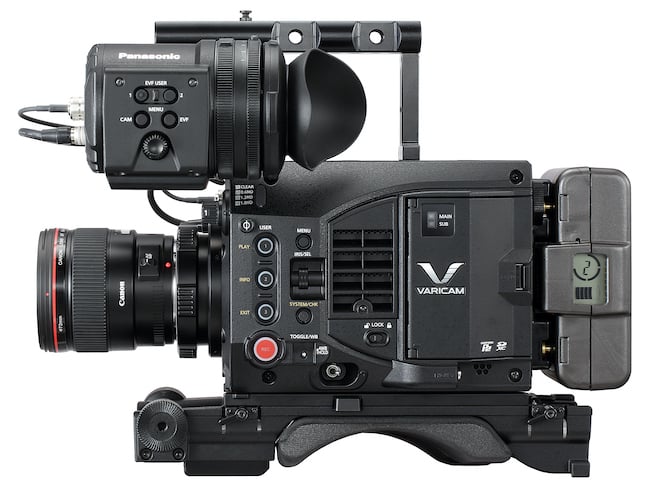
The Varicam LT. Compact, 'cinematic', and shoulder mountable
Yes, I know what the stalwarts will say. You'll tell me that shooting with a shoulder mount is more convenient in many instances than an FS7, FX9, or an EVA1. But I'm not talking about one narrow capability focus. I'm talking about the whole picture, pardon the pun. You can start small with the FS7 and rig it out as you can afford it rather than in one hit, so the initial investment can be smaller. It can be adapted to all manner of different uses. It can be used small and light, or rigged to the hilt. You can make a big chip 'smaller' (windowing), but you can't make a small chip bigger. Likewise you can make a smaller camera bigger, but not a big camera smaller.
Because of this versatility it is therefore much easier to see why a camera like the FS7 or FX9 would make much more sense to video content creators who could be shooting a cinematic short one day and a press conference the next. As a result the 2/3" shoulder mount camera has returned firmly to its roots in broadcast news gathering where it ruled the roost for many years before corporate users seconded it due to having no other realistic alternatives at the time. But even now the broadcast sector homeland is not a safe haven. There are plenty of Sony FS7s being used in a news gathering context.
Is it as perfect in such a scenario as a dedicated camera? Maybe it is, maybe it isn't. It depends who you ask. But it's the fact it can be configured in such a way in the first place that is its trump card.
As cameras are refined, we'll eventually see the perfect balance of camera for a new generation. The Blackmagic URSA has really hit its stride now, and it is telling that Sony does not class the FX9 for instance as a cinema camera. It is simply, alongside the FS7 and FS5, classed as a 'handheld camcorder'. At the pace at which cameras are being refined and their uses cross over into all manner of sectors, I would not be surprised at all if the 2020's were the final call for the traditional shoulder mount camcorder, as we know it anyway.
Tags: Production


Comments